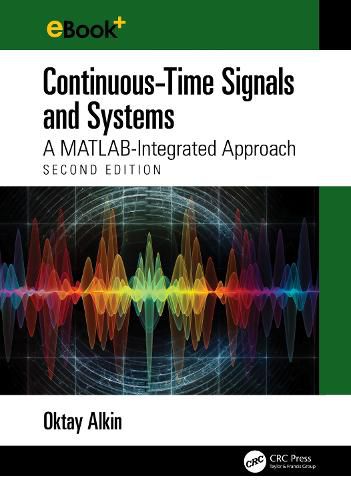Readings Newsletter
Become a Readings Member to make your shopping experience even easier.
Sign in or sign up for free!
You’re not far away from qualifying for FREE standard shipping within Australia
You’ve qualified for FREE standard shipping within Australia
The cart is loading…






Drawing on author's 30+ years of teaching experience, "Continuous-Time Signals and Systems: A MATLAB Integrated Approach" represents a novel and comprehensive approach to understanding signals and systems theory. Many textbooks use MATLAB as a computational tool, but Alkin's text employs MATLAB both computationally and pedagogically to provide interactive, visual reinforcement of fundamental concepts important in the study of continuous- time signals and systems.
In addition to 210 traditional end-of-chapter problems and 168 solved examples, the book includes hands-on MATLAB modules consisting of:
77 MATLAB-based homework problems and projects (coordinated with the traditional end-of-chapter problems) 106 live scripts and GUI-based interactive apps that animate key figures and bring core concepts to life Downloadable MATLAB code for most of the solved examples 64 fully detailed MATLAB exercises that involve step by step development of code to simulate the relevant signal and/or system being discussed, including some case studies on topics such as synthesizers, simulating instrument sounds, pulse-width modulation, etc. The ebook+ version includes clickable links that allow running MATLAB code associated with solved examples and exercises in a browser, using the online version of MATLAB. It also includes audio files for some of the examples.
Each module or application is linked to a specific segment of the text to ensure seamless integration between learning and doing. The aim is to not simply give the student just another toolbox of MATLAB functions, but to use the development of MATLAB code as part of the learning process, or as a litmus test of students' understanding of the key concepts. All relevant MATLAB code is freely available from the publisher. In addition, a solutions manual, figures, presentation slides and other ancillary materials are available for instructors with qualifying course adoption.
$9.00 standard shipping within Australia
FREE standard shipping within Australia for orders over $100.00
Express & International shipping calculated at checkout
Drawing on author's 30+ years of teaching experience, "Continuous-Time Signals and Systems: A MATLAB Integrated Approach" represents a novel and comprehensive approach to understanding signals and systems theory. Many textbooks use MATLAB as a computational tool, but Alkin's text employs MATLAB both computationally and pedagogically to provide interactive, visual reinforcement of fundamental concepts important in the study of continuous- time signals and systems.
In addition to 210 traditional end-of-chapter problems and 168 solved examples, the book includes hands-on MATLAB modules consisting of:
77 MATLAB-based homework problems and projects (coordinated with the traditional end-of-chapter problems) 106 live scripts and GUI-based interactive apps that animate key figures and bring core concepts to life Downloadable MATLAB code for most of the solved examples 64 fully detailed MATLAB exercises that involve step by step development of code to simulate the relevant signal and/or system being discussed, including some case studies on topics such as synthesizers, simulating instrument sounds, pulse-width modulation, etc. The ebook+ version includes clickable links that allow running MATLAB code associated with solved examples and exercises in a browser, using the online version of MATLAB. It also includes audio files for some of the examples.
Each module or application is linked to a specific segment of the text to ensure seamless integration between learning and doing. The aim is to not simply give the student just another toolbox of MATLAB functions, but to use the development of MATLAB code as part of the learning process, or as a litmus test of students' understanding of the key concepts. All relevant MATLAB code is freely available from the publisher. In addition, a solutions manual, figures, presentation slides and other ancillary materials are available for instructors with qualifying course adoption.